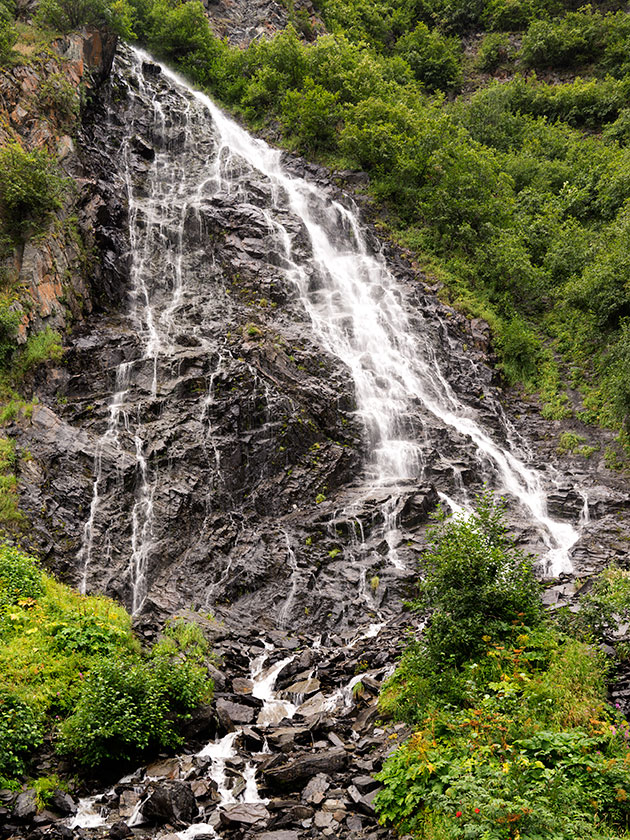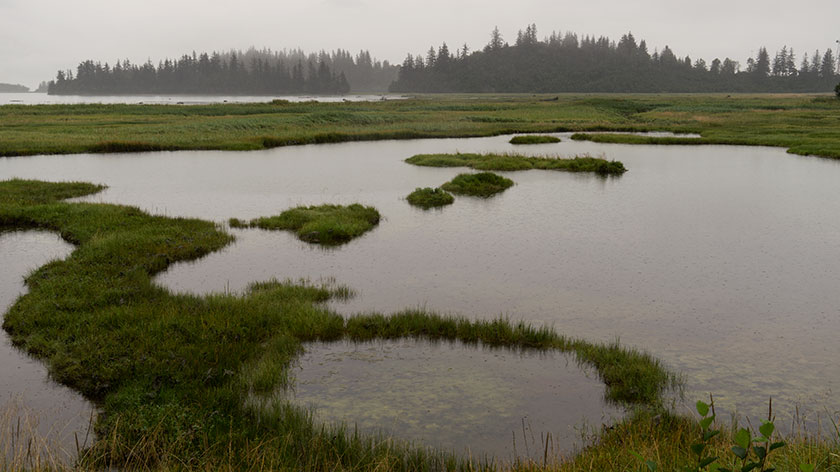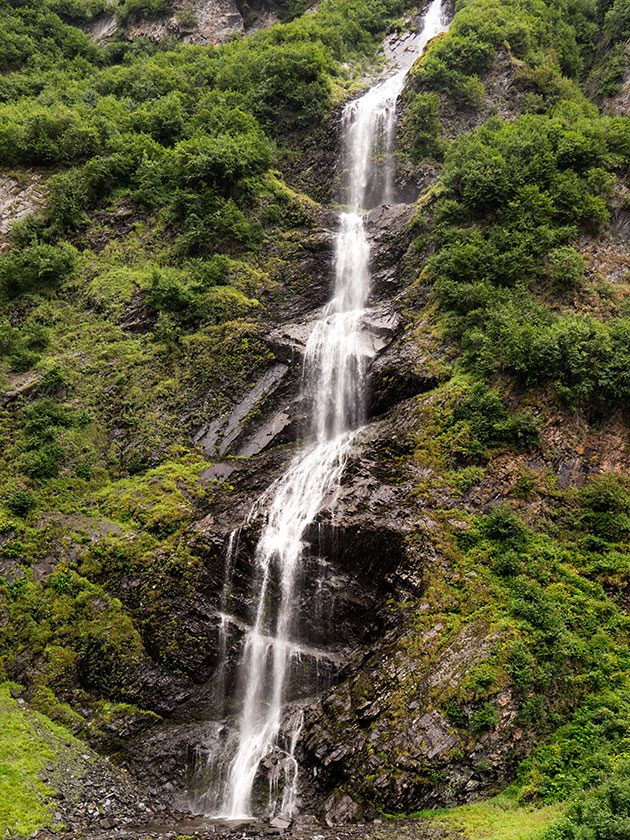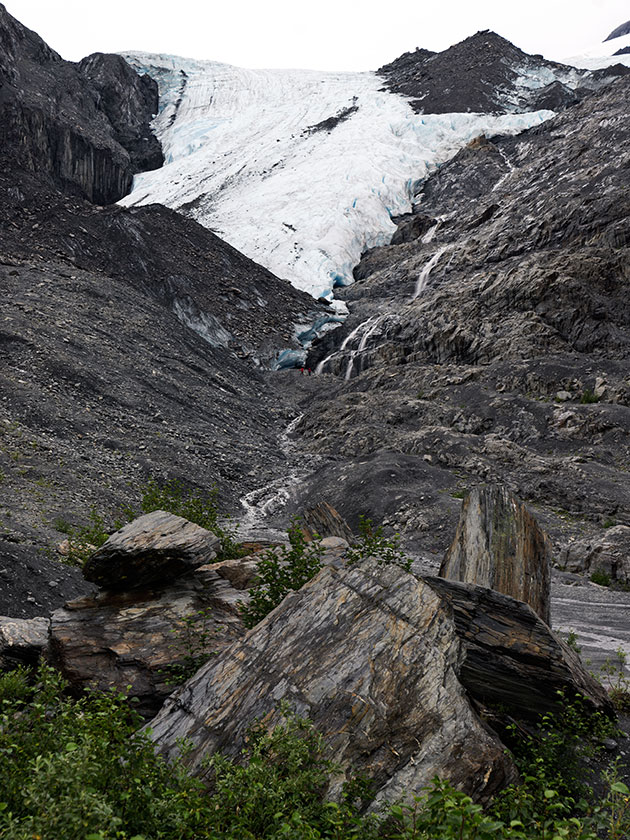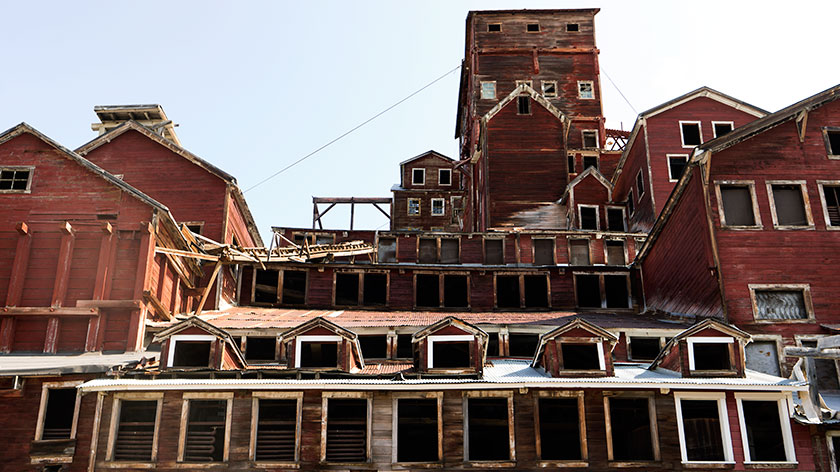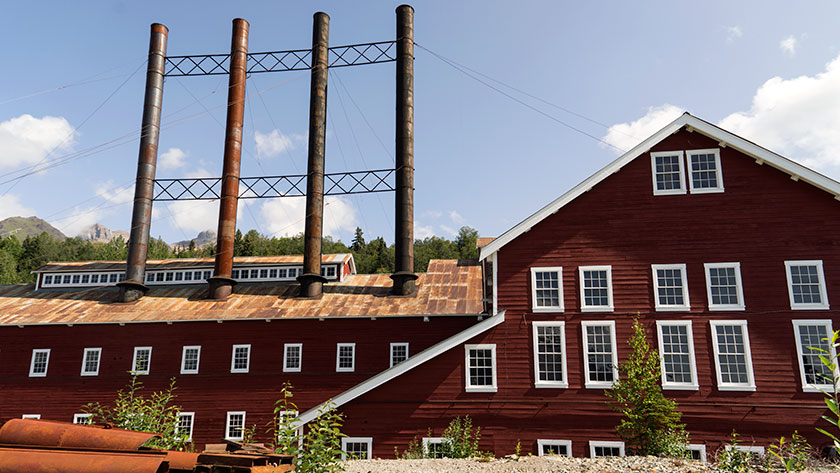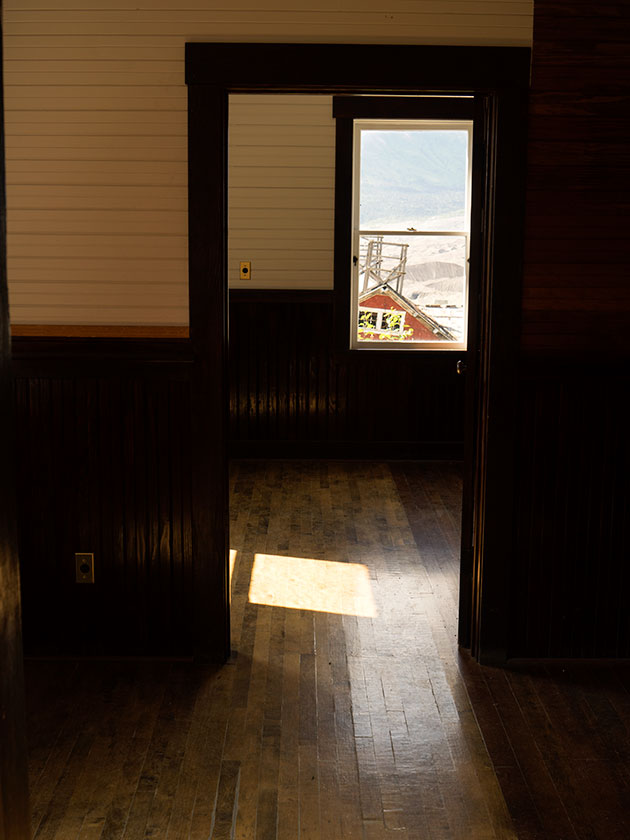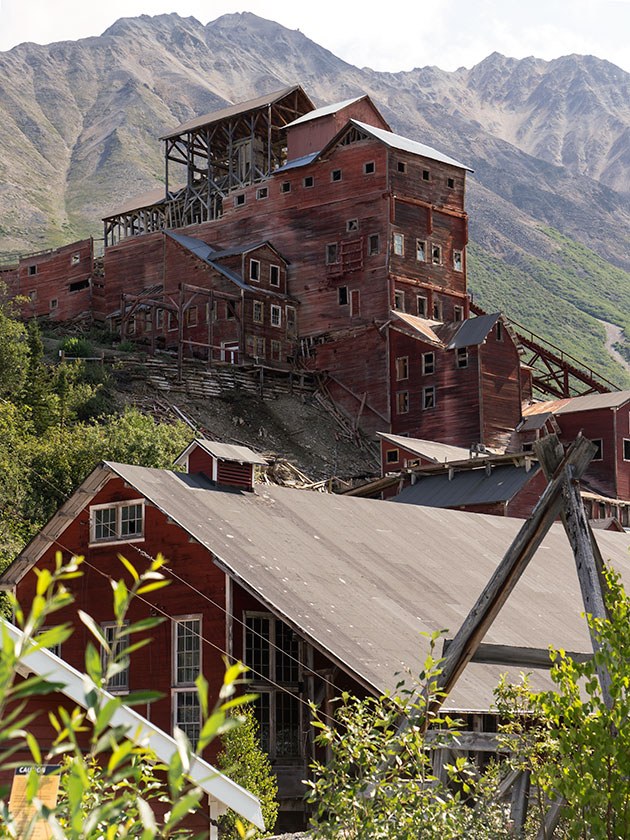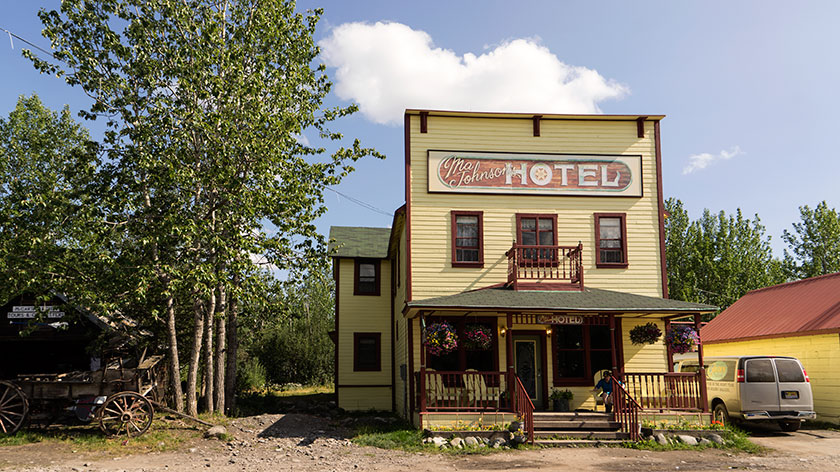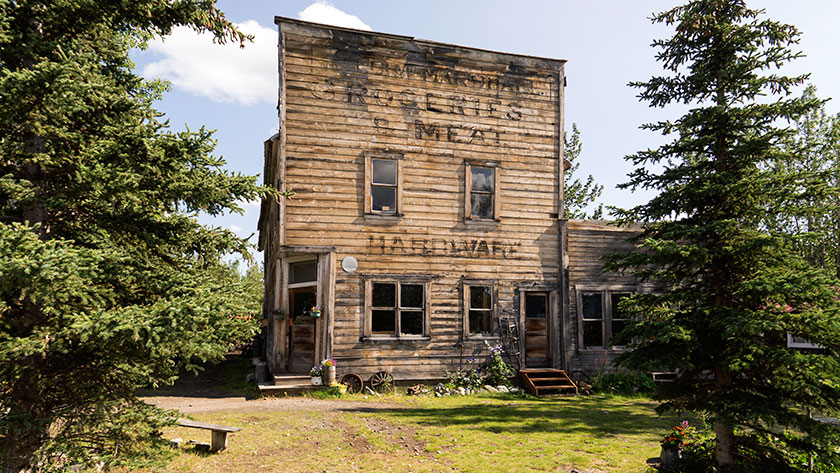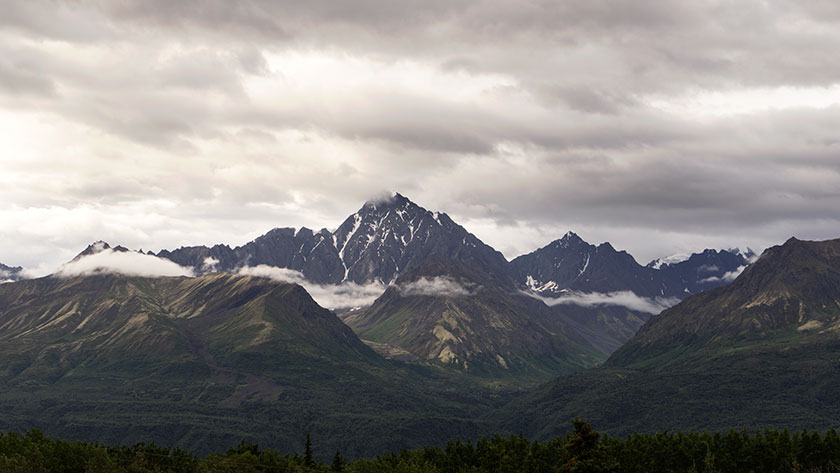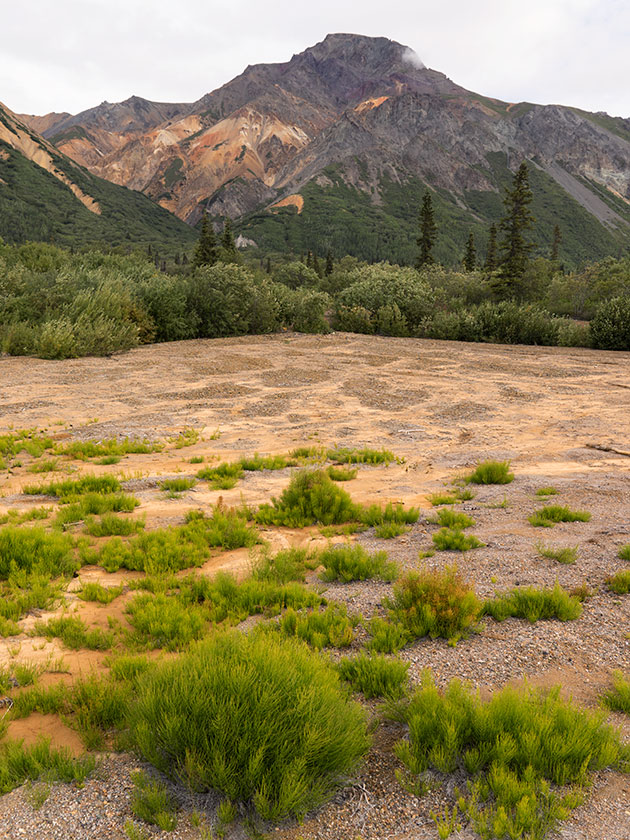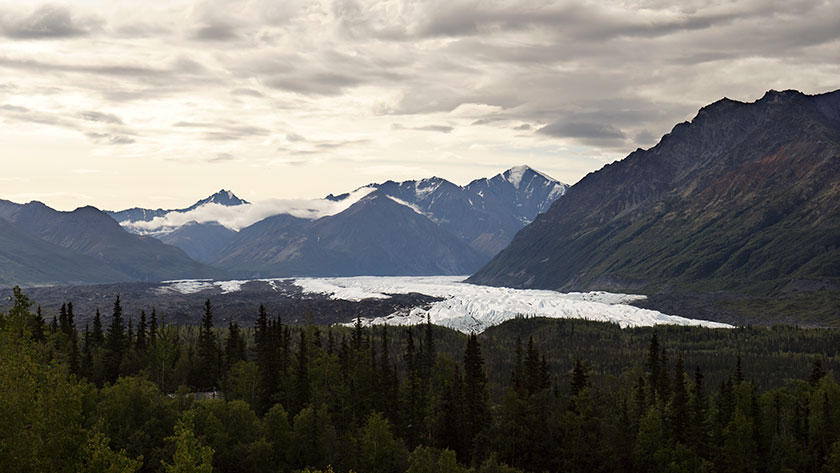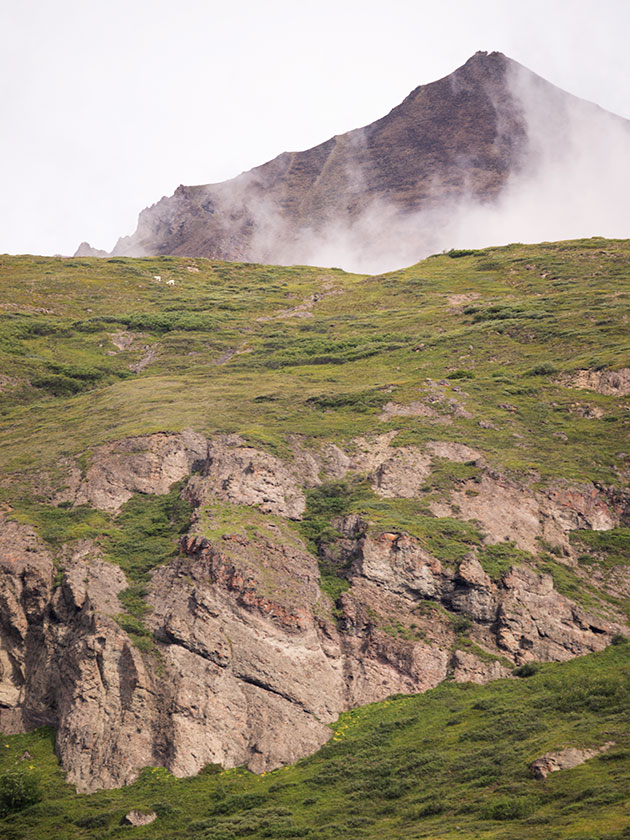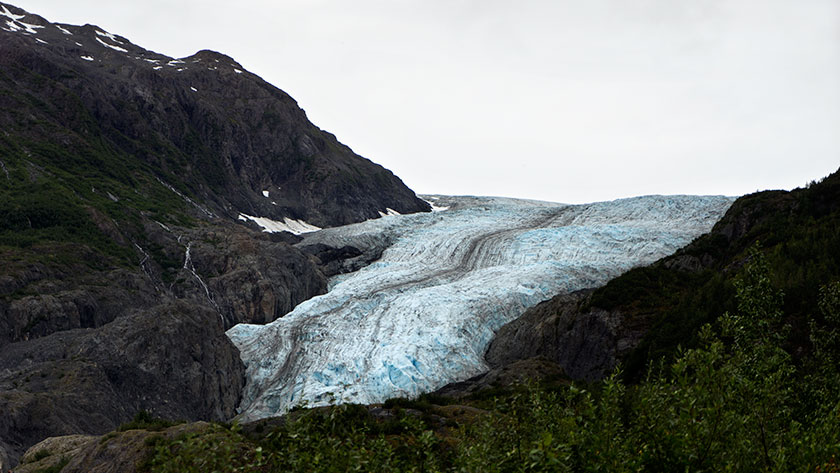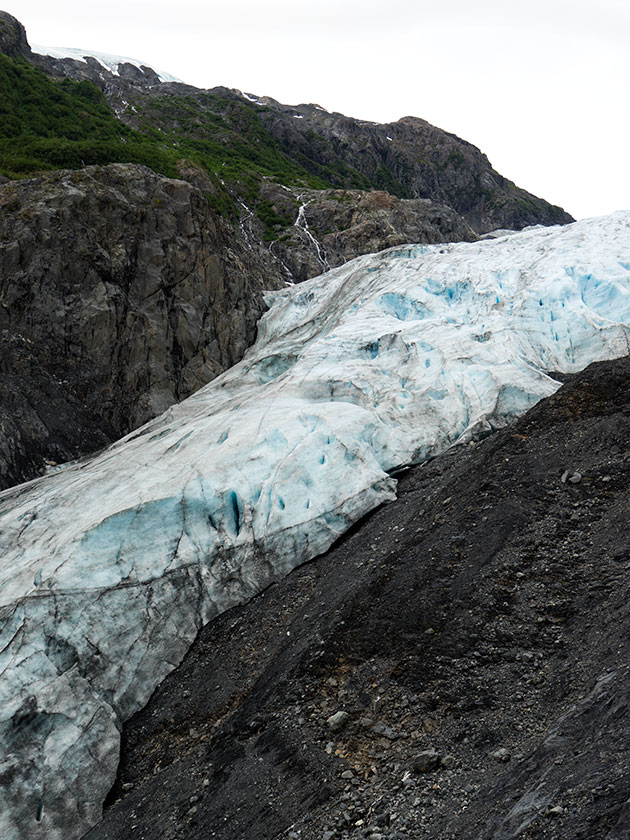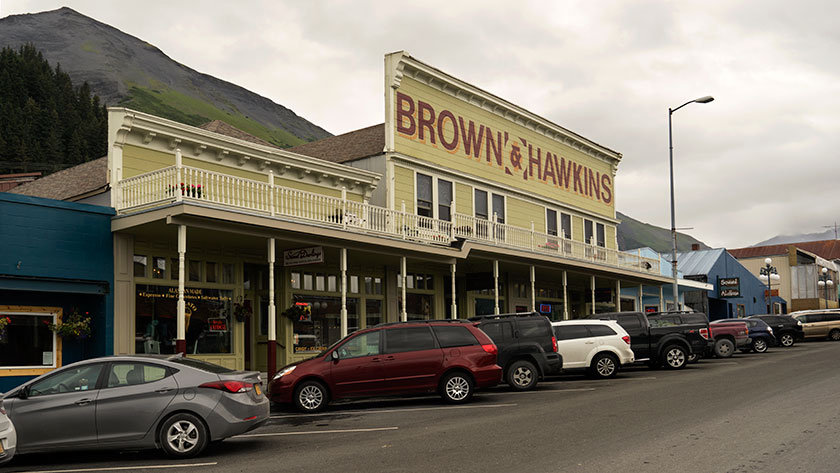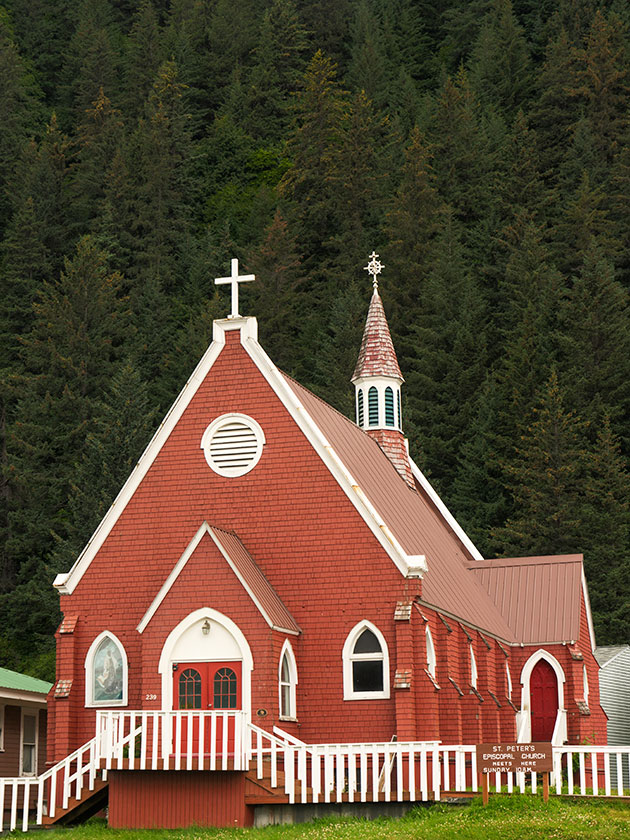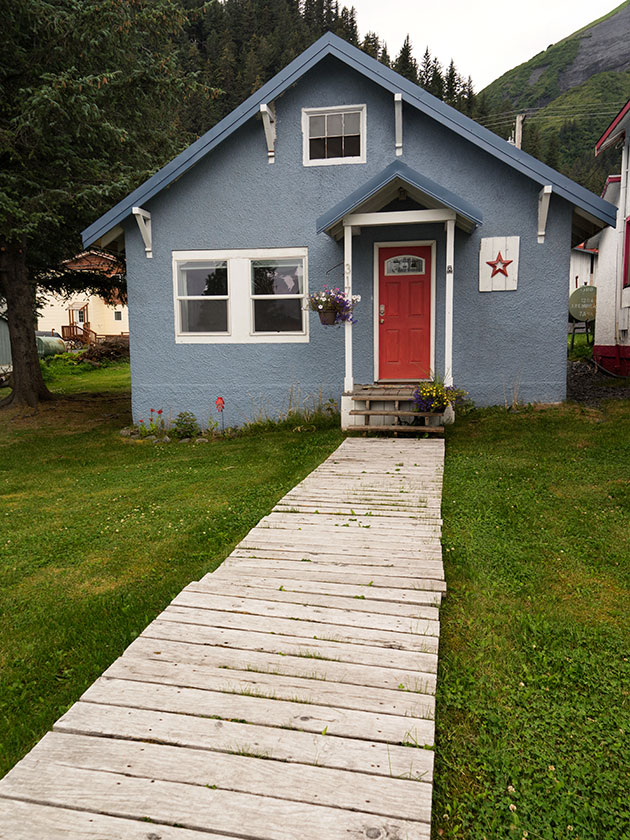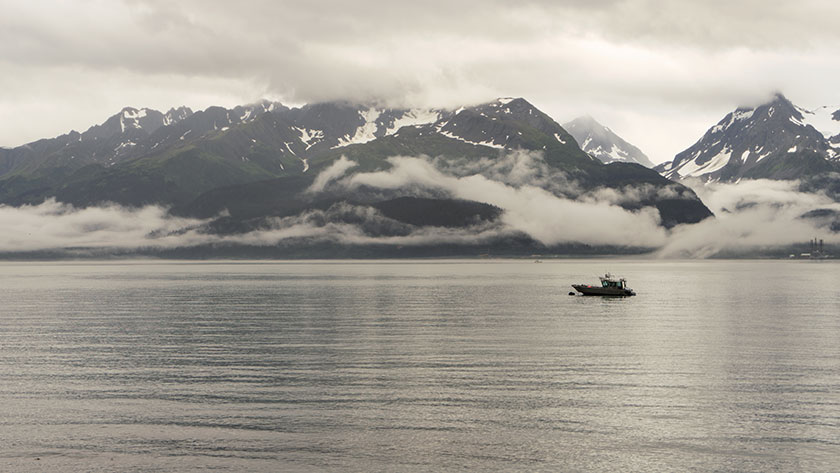Tok (rhymes with Coke) is a small town along the Alaska Highway, not a hundred miles west of the Canadian border. Sometimes, on the road signs, it’s called Tok, and other times, Tok Junction since it’s where Alaska Highway (AK 2) and the Richardson Highway (AK 1) intersect. Because of its site, the primary industry here is to service highway travelers. The unique thing about Tok is that if you drive into Alaska, it’s the only community you have to go through twice.
Queen Anne and I returned to Tok yesterday, and the rest of the gang will arrive this afternoon. (The S.S. Minnow did return to port late yesterday, and everyone had a great time; see Deb’s comment in the Valdez post for details) This means we’ve completed our circular tour of the state. We will bid Alaska farewell tomorrow and begin our trip home via the Yukon Territories, British Colombia, and along the U.S. West Coast.
We’re staying at the Sourdough Campgrounds RV Park and Cafe, run by Tim and Tracy Hulett. They both share responsibilities in running the park and café. Tim cooks, Tracy handles the tables, Tracy checks in guests, and Tim does maintenance in the park.
The park has two shticks going for it. The first is that they have a quarter car wash on the premises. I can’t begin to tell you how important that was to us after driving down the muddy Chicken Road. The second unique thing they do here is they hold their world-famous pancake toss on the stage behind the office every evening. OK, so someone in England knows about it, and that makes it world-famous.
Every night, Tim has about a dozen pancakes on a platter, and every attendant gets a turn at tossing two pancakes into a bucket. The first is practice, but you win a free pancake breakfast in the morning if you get the second one in. Of course, during the show, everyone gets to introduce themselves, tell where they are from, and what they hope to see on their trip. Each person tells their own story, and a lot of ribbing goes on. For example, when our gang all stood up and said that we were from Congress, no one believed anyone was left in town.
When someone is ready to toss a pancake (the secret is to toss and not try to fling them Frisbee style), they say ready, and the rest of the audience has to chant encouragement. If Tim catches someone not chanting, they have to go in front of the audience and get chanting lessons.
I know that I should have written about this last month, but I didn’t. We had WiFi problems, and I had to catch up on several posts. I also knew that we would be back . . . for another reason.
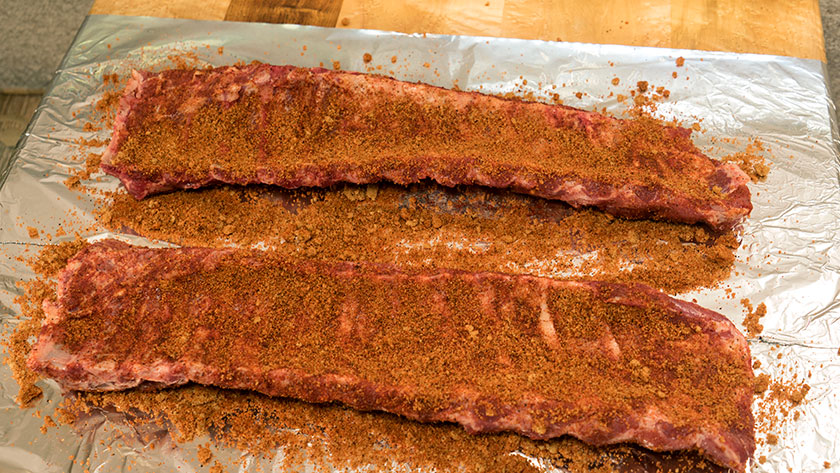
After the show we attended, we all sat around the campfire that Tim builds each evening and just chatted. We enjoyed our wine and asked to hear Tim’s story . . . which eventually led to cooking. As we compared favorite foods, he boasted about his ribs. I turned to Anne and said, “Here, hold my beer; watch this.” And that’s how the first-ever Great Tok Rib Smack-Down was born.
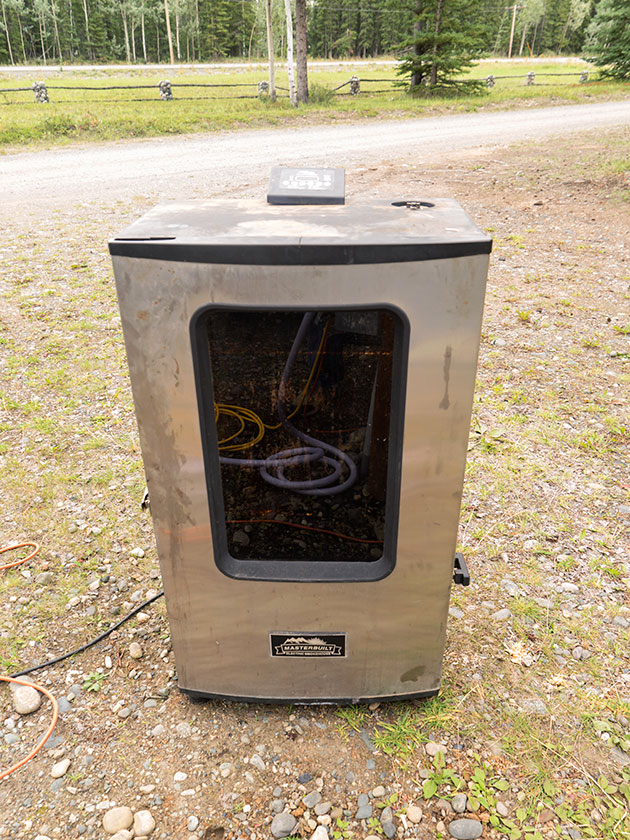
It took a month looking for ingredients to make my sauce, and Tim graciously supplied a couple of rib racks and an electric smoker for me to use. The ribs have been on for three hours now, and there are two more to go before the judging. My ribs look great, but I haven’t even put sauce on them yet. Tracy has enlisted two or three people checking in to serve as judges. They won’t know who the cooks were.
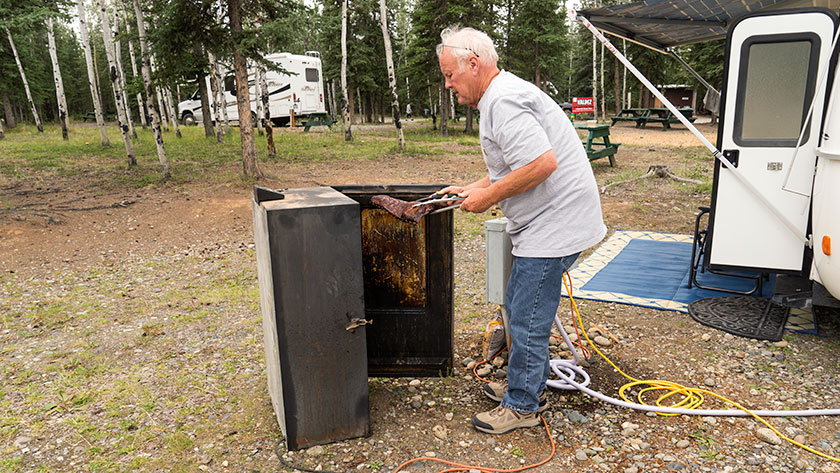
I honestly don’t care who wins. I see the event as a going-away party, a celebration of our time in Alaska. The best thing is that we’ll drive a sparkly, clean truck and trailer behind us when we hit the road.
jw
Also, although it doesn’t matter, the judges marginally voted for my ribs. I don’t believe there’s a loser here because we both enjoyed cooking. Thanks again for the hospitality, Tim.
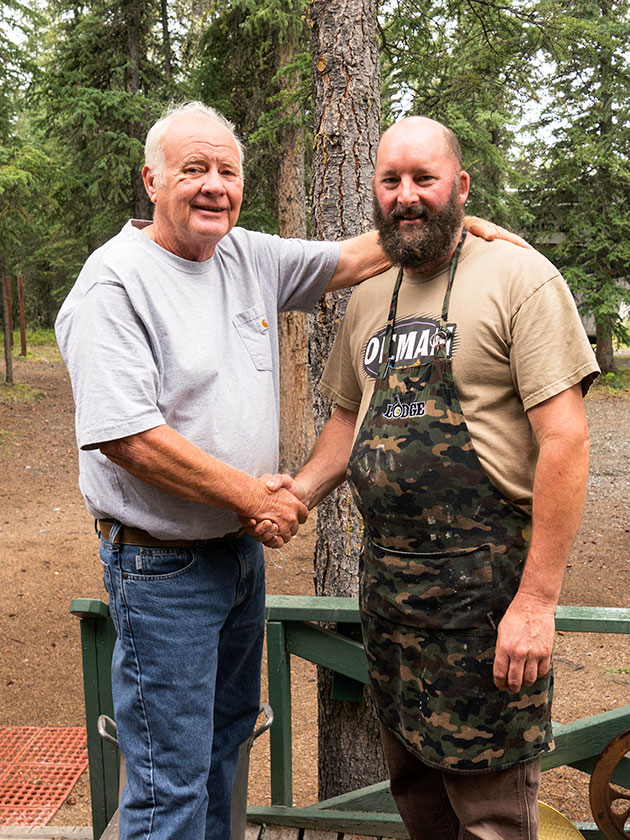
P.S.S. At this evening’s pancake toss, yours truly won a free breakfast.

